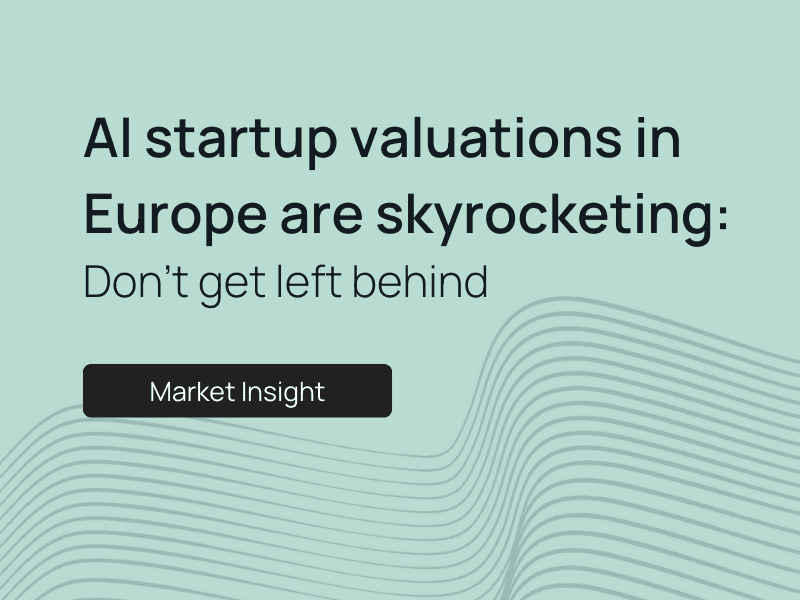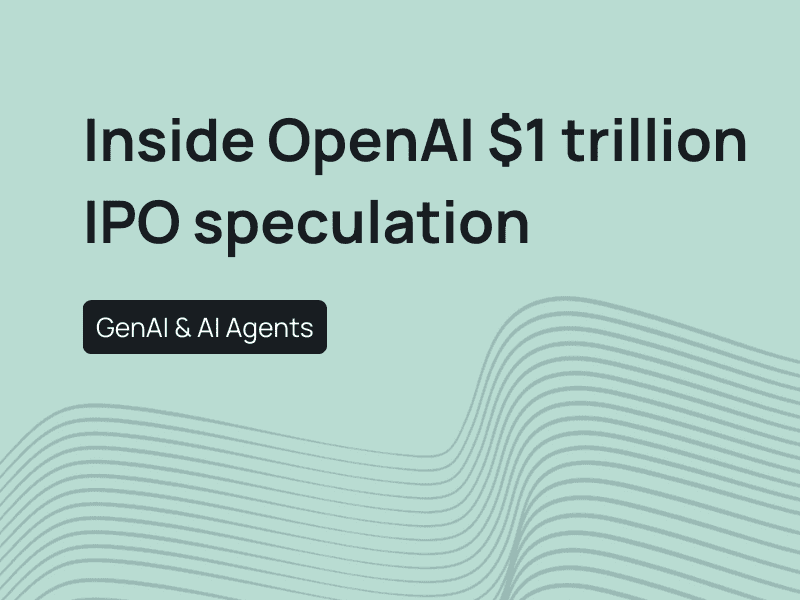Silicon Valley has long defined the global narrative around artificial intelligence, with its concentration of capital, talent, and technology giants. Yet beyond the headlines, Europe is steadily shaping a distinctive AI ecosystem with its own strengths and momentum.
With standout players like Mistral and Lovable, opportunities are emerging in areas where Europe’s unique mix of academic leadership, regulatory clarity, and sustainability focus can translate into defensible business models and attractive returns.
Europe’s unique AI landscape
Europe is building a distinct AI ecosystem engineered for sustainable, high-value growth. Its advantage lies not in replicating other models, but in leveraging its unique structural strengths.
A foundation of industrial strength and innovation
Europe’s core advantage is its industrial base, which provides a vast, ready-made market for applied AI. With industrial production valued at over €4.5 trillion annually, the opportunity for vertical B2B solutions is immense.
This demand is actively driving growth; for example, the German manufacturing sector alone is projected to invest €7 billion per year in AI by 2025. Which allows startups to develop deeply embedded, defensible products in high-value sectors like automotive, healthcare, and fintech from the outset.
A coordinated system for talent
This industrial demand is met by a highly coordinated engine for innovation. Europe is home to over 25% of the world's top AI research institutions, producing roughly 30% of global AI publications. It’s a deep talent pool of an estimated 400,000+ professionals, with salary costs in key hubs like Berlin and Paris often significantly lower than in Silicon Valley.
The transition from lab to market is systematized. Leading institutions like ETH Zurich and TU Munich have robust pipelines for spinning out ventures, a process accelerated by substantial public funding. The EU has committed over €10 billion to AI through programmes like Horizon Europe, which funds critical infrastructure and de-risks early-stage development. This creates a steady stream of investment-ready, deep-tech companies grounded in proprietary IP.
Regulation as a strategic moat
Governance frameworks like the EU AI Act and GDPR create a "trust premium." While introducing upfront compliance, these rules de-risk long-term scaling, especially in sensitive sectors like healthcare—where the European AI market is growing at a 41.5% CAGR. For investors, this means compliant companies are more valuable and exit-ready, as they have a clear advantage in serving regulated industries and a market of over 450 million consumers.
A resilient ecosystem
Finally, Europe’s innovation network is distributed across specialized hubs—including London, Berlin, and Paris. This polycentric model prevents the talent saturation and cost inflation seen in concentrated markets, spreads risk, and provides access to diverse sector-specific strengths. The result is a more resilient and dynamic landscape for building enduring AI companies.
Mistral and Lovable: Case studies in the EU model
Mistral AI - French startup Mistral develops foundational AI engines—comparable to GPT-4 or Gemini—and makes both the code and model weights freely available. Flagship releases like Mistral 7B and Mixtral 8x7B give developers and enterprises direct access to state-of-the-art AI without lock-in to US tech giants. By enabling full customization and ensuring data sovereignty, Mistral positions Europe as a credible counterweight in the global AI race.
Lovable AI - Lovable AI is a B2B company that uses existing AI models to build tailored software applications for specific, complex business problems. Their value proposition is focused on trust and compliance. Given Europe's strict GDPR and AI Act, Lovable designs its applications with data privacy and ethical guidelines as core features, turning potential regulatory barriers into a compelling reason for risk-averse European enterprises to choose them over less transparent competitors.
Challenges
Market fragmentation and operational complexity
Europe’s patchwork of regulations and languages is a direct tax on efficiency. It prevents the rapid, capital-light scaling seen in the U.S., forcing a "country-by-country" grind that erodes margins. For investors, this means higher upfront operational costs and a longer path to profitability. Any credible investment thesis must budget for this complexity and include a phased, sharp expansion plan.
Capital scarcity
While seed funding is available, the relative lack of large, late-stage funding rounds compared to the U.S. creates a Series B/C+ funding gap. This presents both a risk and an opportunity: portfolio companies may face dilution or down-rounds if not properly capitalized, but it also allows investors to secure attractive terms by providing the growth capital needed to bridge this gap.
Infrastructure dependency
Reliance on non-European cloud and semiconductor suppliers creates strategic and operational vulnerability. It introduces unpredictable operational costs and potential regulatory interference that can derail financial projections. Mitigation strategies—such as multi-cloud architectures and negotiating long-term supply agreements—are essential financial safeguards that must be identified to protect the investments’ core operational stability.
The bottom line
While Silicon Valley chases consumer AI, Europe is building an ecosystem optimized for high-value enterprise solutions. The real investment opportunity isn't in general-purpose models, but in specialized B2B AI that leverages Europe's industrial depth and regulatory rigor as built-in competitive moats.
This focus on solving complex, high-stakes business problems creates more defensible companies and superior risk-adjusted returns. The smart money is backing the architects of this industrial-grade AI future, not imitators of the consumer-centric past.
Published by Samuel Hieber


